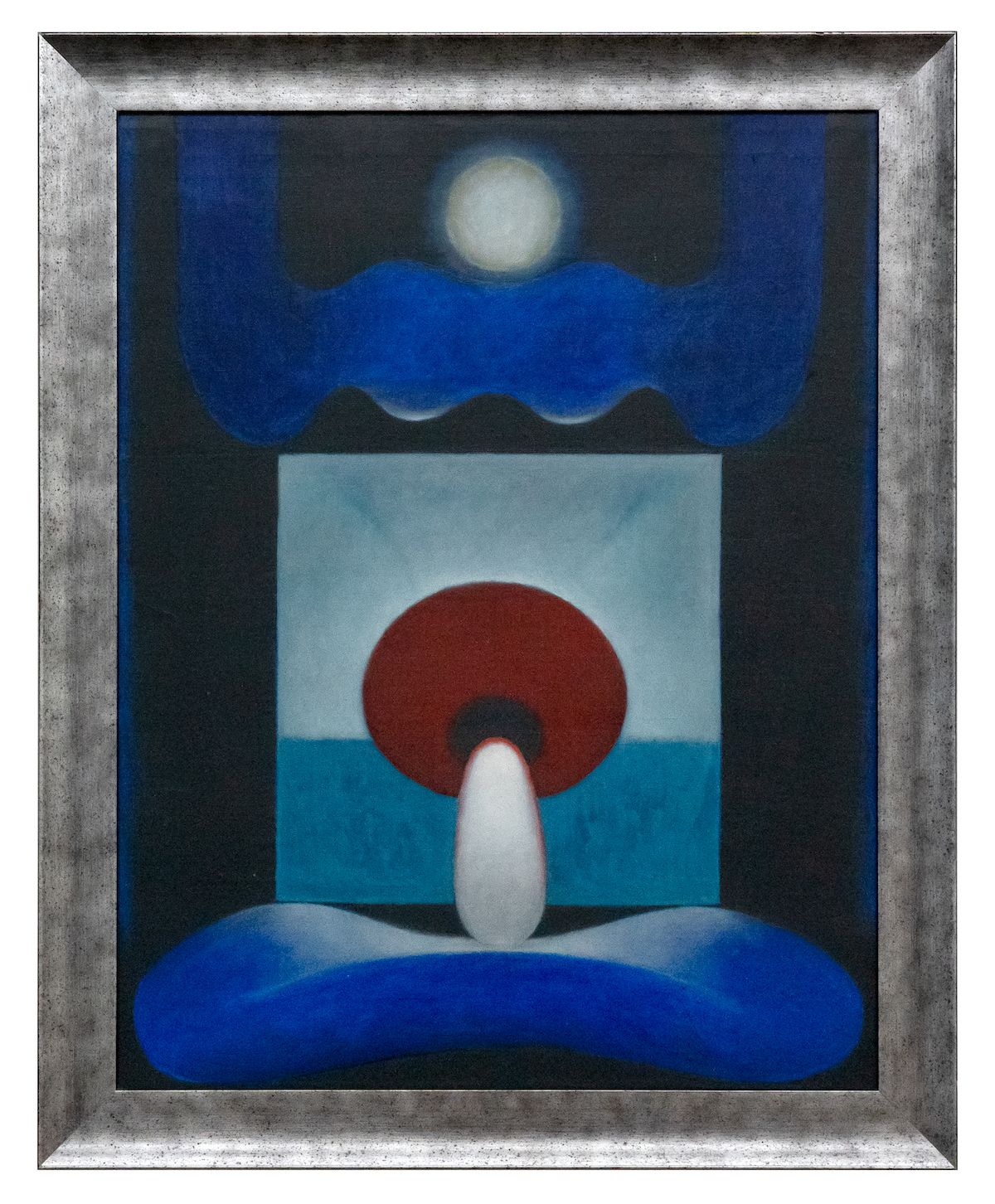Our Ashes Make Great Fertilizer at Public Gallery (until 7 October) is a surprisingly star-studded group show centred loosely around the theme of "transformation". The undoubted highlight is a never-before-exhibited 1970 painting by the Kashmiri neo-Tantric artist Gulam Rasool Santosh sourced by the show's co-curators Harminder Judge and Saelia Aparicio. Santosh's painting joins 16 other works, several of which are by South Asian diaspora artists, including Shezad Dawood and the Salon 94-represented Huma Bhabha. Other big draws include a work-on-paper made during lockdown by Turner Prize winner Tai Shani and Gray Wielebinski’s Minnie (2018)—a minotaur sewn from shiny PVC style perforated leather, described by the gallery's co-director, Harry Dougall, as an "S&M Donnie Darko bunny". The show—the first in Public's new Spitalfields space—is a promising vision of the future ambitions of the young gallery, which we hear is about to start adding the first artists to its roster.
Keegan Monaghan: Threads at James Fuentes in New York (until 27 September) brings together a series of large-scale oil paintings by the Chicago-born, Brooklyn-based artist, whose work featured in the 2019 Whitney Biennial. Keegan, who has described his paintings as depicting "dramatic states of immersion, absorption or alienation", produces heavily textured paintings that masterfully edge between figuration and abstraction. Works like Peas (2020) and Clouds (2020) oscillate between macro and micro scales, showing banal subjects rendered with great emotional intensity. Mostly completed amid the pandemic, the gallery says that the works hold a "number of conflicting feelings at once: loneliness but also intimacy, apprehension but also a slow, deliberate sense of care".
The online show Ecology of an Exhibition at the Princeton University Art Museum considers the environmental impact of showing art. From the logistics of moving and preserving artwork to the average energy consumption required to ensure precise temperature and humidity control in galleries and storage spaces, the show examines the ecological footprint of the exhibition process—and suggests alternatives for making it more green, including the production of digital rather than printed catalogues and the creation of standardised crating and packing methods. The show is a virtual extension of the exhibition Nature’s Nation: American Art and Environment, which closed in January and considered how American artists have reflected and shaped environmental understanding and contributed to the development of a modern ecological consciousness.


